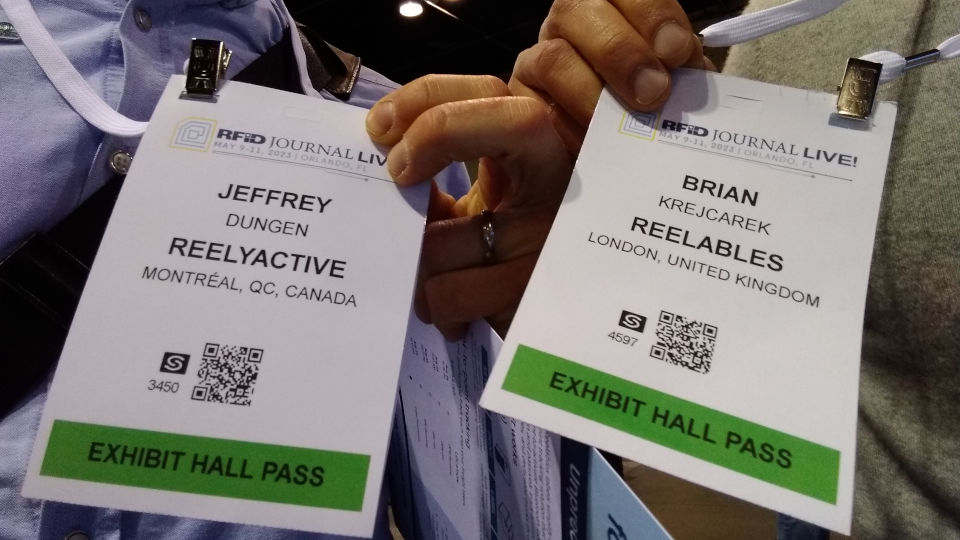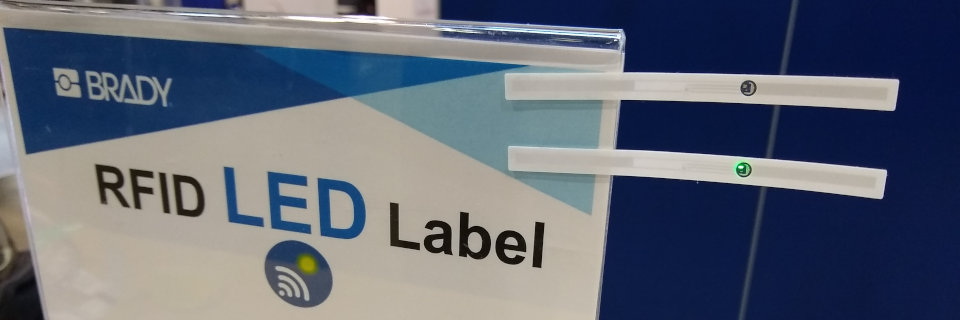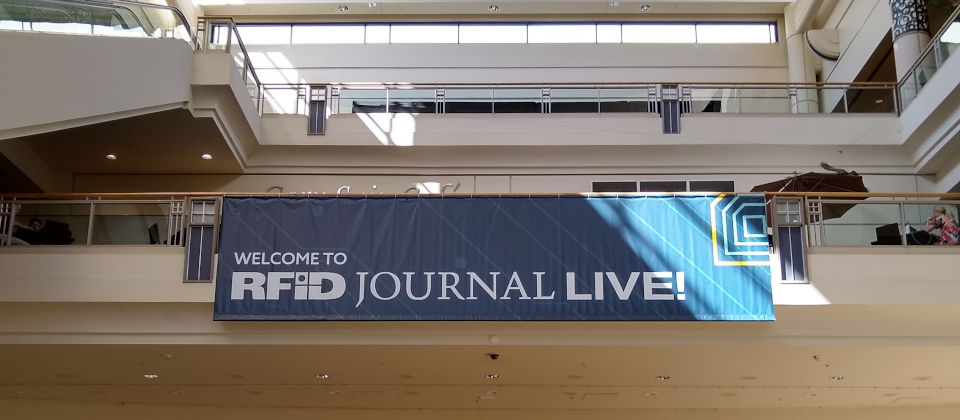From the standpoint of both applications and economics, Bluetooth Low Energy and RAIN RFID technologies are rapidly converging.
In short, that’s our key takeaway from the RFID Journal Live 2023 exhibition floor in Orlando last week.
Bluetooth Low Energy and RAIN RFID are both AIDC (Automatic Identification and Data Capture) technologies, and, perhaps fittingly, the AIDC industry was celebrating its 50th anniversary (AIM50) at this year’s conference. The core difference between the two is that the former is an active technology (beacons spontaneously transmit their identifier using self-sourced energy) and the latter is a passive technology (tags backscatter their identifier using energy supplied by readers). Historically, this difference has maintained a clear division in their real-world applications.
So what has changed? In this blog post we’ll examine three factors: costs, and sensing & real-time location capabilities.
Costs
When we founded reelyActive in 2012, active RFID tags (including the ones we developed) cost tens of dollars each while passive RFID tags were well under one dollar each. Economics clearly separated the applications of active and passive RFID technologies.
At this year’s conference, we congratulated the InPlay team in person on their contribution to the advent of the $1 Bluetooth Low Energy tag: at the time of writing, anyone can purchase their innovative IN100 IC for $0.40 each on DigiKey in a reel of 5,000 PCS!

And, at their booth, we discovered Reelables (of course we reely love the name!) which use that IC to offer printed Bluetooth Low Energy tags for logistics and supply chain in a form factor and process identical to that of passive tags. It’s not difficult to imagine the market gap that can fill, especially given the price advantage of Bluetooth Low Energy infrastructure, which may already be present, as we explained in our recent Infrastructure 4.0 post!
Speaking of infrastructure costs, the passive gap is narrowing too: at the conference we picked up a Chafon CF600 USB RAIN RFID reader for less than we’ve paid for some Bluetooth dongles!
Sensing Capabilities
The ability to sense environmental (temperature, humidity, etc.) and other factors has typically been the realm of active RFID technologies, given the cost and energy requirements of the sensors themselves. That is changing fast. At this year’s conference we saw examples from a number of RAIN RFID vendors, and even picked up samples using ASYGN’s AS321X IC which supports a variety of internal and external sensors.

We were impressed too with live demos of RAIN RFID tags sporting LED tags that can be illuminated by reading a dummy address on the tag. For instance, the EDISON line of tags from Shanghai ReadFind IoT is sufficiently economical to imagine tagging individual folders, bins, or other containers throughout a facility, facilitating picking and replenishment by a human operator, saving time and avoiding mistakes locating the right item: it blinks!
RTLS Capabilities
Continuing on the theme of location, real-time location systems (RTLS), which facilitate the location of individual tags within a physical space or facility, have typically been the realm of active RFID technologies. That too is changing fast!

Since the 2022 conference, we’ve had the occasion to integrate our open source middleware with RF Controls’ RTLS technology for RAIN RFID on a number of client deployments, and to see for ourselves just how well their technology delivers to promise! Especially in high-ceiling environments, where their Smart Antennas shine, the value proposition and ROI for item-level tracking is unmatched, with performance rivalling Bluetooth Low Energy systems based on angle-of-arrival. Yes, passive RTLS!
It’s all AIDC
When reelyActive first attended RFID Journal Live in 2013, the RAIN RFID Alliance had yet to form, and Bluetooth Low Energy had yet to assume its place as a global standard for active RFID. Now, a decade later, we might argue that the need to explicitly distinguish between the two—or between active and passive RFID technologies altogether for that matter—may be more about technicality than practicality. 50-years on, AIDC is still AIDC, and for most end users, “labels that you can automatically identify, count and locate” surely resonates better than RFID, RTLS, BLE, RAIN or any other acronym we use in this industry!

And for that reason, we’re as proud as ever to be abstracting away those acronyms from end users (and integrators), fostering interoperability across vendors and technologies with our open source Pareto Anywhere middleware that simply provides real-time digital context: “who/what is where/how.”
